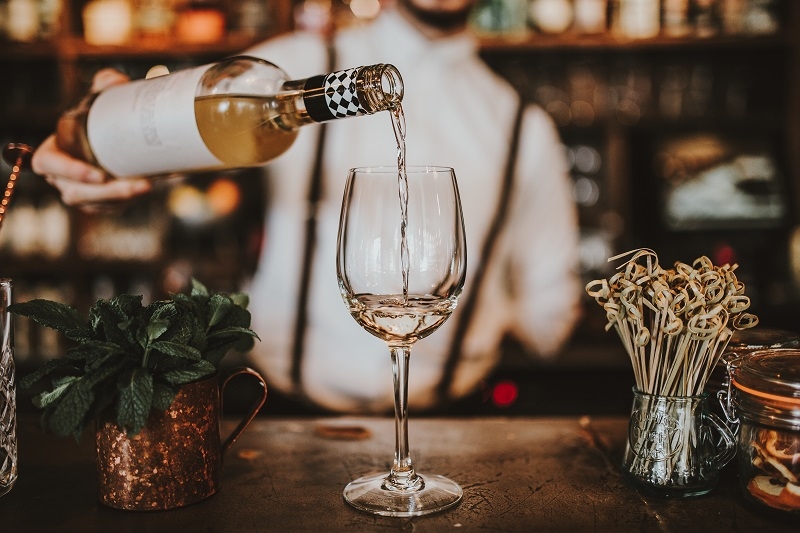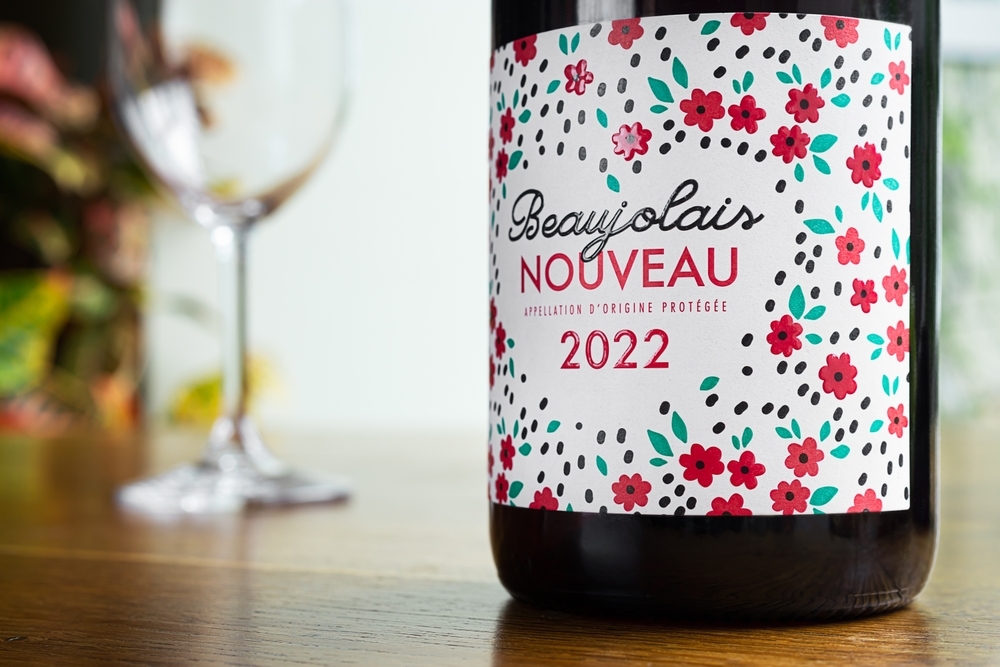Prosecco Vs. Champagne: Bubbly Battle of the Sparkling Wines

Two names reign supreme in the vast landscape of sparkling wines: Prosecco and Champagne. These effervescent elixirs reflect sophistication, celebration, and the finer things in life. Both wines embody the essence of festivity, and each one possesses unique characteristics from its distinct origins, production methods, and grape varieties. Lets explore Prosecco and Champagne deeper, uncovering the nuances that bring these modern delights to life.
The Precious Prosecco
Prosecco, originating from the picturesque hills of the Veneto region in northeastern Italy, is a sparkling wine renowned for its vibrant bubbles and lively personality. Crafted primarily from the indigenous Glera grape variety, Prosecco captivates the senses with its crisp acidity, delicate fruitiness, and refreshing enthusiasm. The Glera grape, with its floral aromas and vibrant citrus notes, forms the heart and soul of Prosecco, infusing each sip with a sense of Italian sunshine and charm. Unlike its French counterpart, Prosecco undergoes fermentation in stainless steel tanks using the Charmat method, which preserves its youthful exuberance and fruit-forward character.
Also Read: Sparkling Wine vs Champagne: Find Out How They Are Different
The Charming Champagne
Champagne, the epitome of French elegance and refinement, hails exclusively from the eponymous Champagne region in northeastern France. Crafted from a blend of Chardonnay, Pinot Noir, and Pinot Meunier grapes, Champagne embodies the essence of terroir, tradition, and unparalleled craftsmanship. Each grape variety lends its unique personality to the final blend, with Chardonnay contributing freshness and finesse, Pinot Noir imparting structure and depth, and Pinot Meunier adding fruitiness and roundness. Unlike Prosecco, Champagne undergoes secondary fermentation in individual bottles through the Traditional Method, also known as the Mthode Champenoise, a labor-intensive process that imbues the wine with complexity, richness, and a signature effervescence.
Champagne vs. Prosecco - Exploring the Differences
Difference of Regions
The geographical origins of Prosecco and Champagne play a pivotal role in shaping their unique terroirs, flavors, and winemaking traditions. Prosecco originates from the gentle slopes and fertile plains of the Veneto and Friuli Venezia Giulia regions in northeastern Italy, where the Glera grape thrives in the sunny Mediterranean climate and mineral-rich soils. The picturesque vineyards of Conegliano-Valdobbiadene and Asolo, designated as UNESCO World Heritage Sites, are renowned for producing the highest quality Prosecco Superiore wines, celebrated for their purity, elegance, and sense of place.
Champagne's storied vineyards are nestled amidst the rolling hills and chalky soils of the Champagne region in northeastern France. The cool climate and unique terroir provide the perfect conditions for cultivating grapes of exceptional quality and character. The subregions of Montagne de Reims, Valle de la Marne, and Cte des Blancs each contribute distinctive flavors and nuances to Champagne's diverse landscape, showcasing the rich tapestry of terroirs and microclimates that define this iconic wine region.
Production Methods Of The Drinks
The disparity in production methods between Prosecco and Champagne lies at the core of their distinct personalities. Prosecco, crafted using the Charmat method, undergoes secondary fermentation in pressurized tanks, where the wine interacts with yeast and sugars to create carbonation. This approach results in a shorter fermentation period and a fresher, fruitier profile, ideal for immediate enjoyment and casual gatherings.
Champagne's Traditional Method involves secondary fermentation occurring within the confines of each bottle, a process that demands time, patience, and meticulous attention to detail. As the wine ages on its lees, it develops layers of complexity, texture, and aromatic depth, culminating in the hallmark characteristics that define Champagne's unparalleled elegance and sophistication.
Grape Varieties In Both Drinks
The grape varieties utilized in Prosecco and Champagne production serve as a testament to their respective terroirs and winemaking traditions. Prosecco predominantly relies on the Glera grape, formerly known as Prosecco, which thrives in the gentle slopes and sunny climate of the Veneto region. Glera's inherent floral aromas, crisp acidity, and delicate fruit flavors contribute to Prosecco's signature freshness and approachability, making it a beloved choice for casual gatherings and everyday indulgence.
Champagne combines Chardonnay, Pinot Noir, and Pinot Meunier grapes, each adding unique character to the final cuve. With its bright acidity and citrus notes, Chardonnay provides elegance and finesse, while Pinot Noir brings structure, depth, and red fruit flavors to the blend. Pinot Meunier, often overlooked but indispensable, imparts roundness, texture, and a hint of floral complexity, ensuring a harmonious balance of flavors and aromas in every glass of Champagne.
What is in the Fermentation Process?
The journey from still wine to sparkling masterpiece unfolds through distinct Prosecco and Champagne production fermentation processes. In the Charmat method employed for Prosecco, secondary fermentation occurs in sealed, pressurized tanks, where sugar and yeast interact to produce carbon dioxide, infusing the wine with bubbles and effervescence. This method allows for a controlled environment that preserves the wine's primary fruit flavors and delicate aromatics, producing a bright, lively expression of Prosecco's terroir and grape variety.
Champagne's Traditional Method involves a more intricate and labor-intensive approach, with secondary fermentation occurring within each bottle. After the base wine is bottled with a mixture of sugar and yeast, it undergoes a period of aging on its lees, where it develops complex flavors, creamy textures, and a signature yeastiness known as autolytic character. This prolonged maturation process imbues Champagne with layers of nuance and depth, elevating it to the pinnacle of sparkling wine excellence.
Aging Requirements
The divergent aging requirements for Prosecco and Champagne reflect their respective production methods and stylistic objectives. Prosecco, crafted for immediate enjoyment and youthful exuberance, typically undergoes a shorter aging period to preserve its primary fruit flavors and delicate aromatics. While Prosecco has no strict regulations governing aging, premium examples may spend a few months on lees to enhance texture and complexity.
Champagne's aging requirements are governed by strict regulations that dictate minimum aging periods based on the wine's style and classification. Non-vintage Champagne, the most ubiquitous expression, must be aged on lees for a minimum of 15 months, while vintage Champagne, crafted from exceptional harvests, requires a minimum of three years of aging. Additionally, prestige cuves and luxury Champagnes may undergo even lengthier aging periods, ranging from five to ten years or more, to achieve unparalleled depth, complexity, and aging potential.
Tasting Notes
The sensory journey offered by Prosecco and Champagne is as diverse as it is delightful, with each wine boasting a distinct array of flavors, aromas, and textures. Prosecco captivates the palate with its bright acidity, zesty citrus notes, and effervescent bubbles reminiscent of a crisp, refreshing sip of Italian sunshine. Its delicate fruitiness, characterized by hints of green apple, pear, and white peach, adds an irresistible charm and vitality to every glass.
Champagne enchants with its multi-dimensional complexity, offering a symphony of flavors and aromas that evolve with each sip. From the vibrant citrus and stone fruit notes of Chardonnay to the rich, red berry flavors of Pinot Noir and the subtle floral nuances of Pinot Meunier, Champagne delights the senses with its depth, finesse, and enduring elegance. The creamy texture, persistent bubbles, and lingering finish further enhance the drinking experience, leaving a lasting impression of sophistication and refinement.
Food Pairings

The culinary versatility of Prosecco and Champagne makes them ideal companions for a wide range of dishes and occasions. Prosecco's vibrant acidity and fruit-forward character complement a variety of appetizers, seafood dishes, and light pasta fare, providing a refreshing counterpoint to delicate flavors and textures. Its effervescence also serves as a palate cleanser, making it an excellent accompaniment to spicy cuisine, fried foods, and creamy cheeses.
Champagne's unparalleled versatility and complexity make it a superb choice for pairing with various cuisines and culinary creations. Its crisp acidity, creamy texture, and nuanced flavor profile make Champagne a natural partner for seafood and shellfish, where it can cut through rich sauces and enhance delicate flavors. From classic pairings like oysters and caviar to more unexpected combinations such as sushi, fried chicken, or even popcorn, Champagne's effervescence and acidity elevate the dining experience, creating moments of pure indulgence and culinary delight.
Check This Out: Taste the Magic: A Wine And Food Pairing Ultimate Guide
Conclusion
Prosecco and Champagne may share a common trait as beloved icons of celebration and indulgence, but their characteristics and personalities set them apart as unique expressions of elegance and sophistication. Savoring the crisp acidity of Prosecco on a warm summer afternoon or toasting with the timeless elegance of Champagne on a special occasion, these iconic sparkling wines offer a journey of discovery and delight, inviting you to experience the magic of bubbles in every glass.
This content was created by AI
No keywords available
-1717753922-r.jpg)


